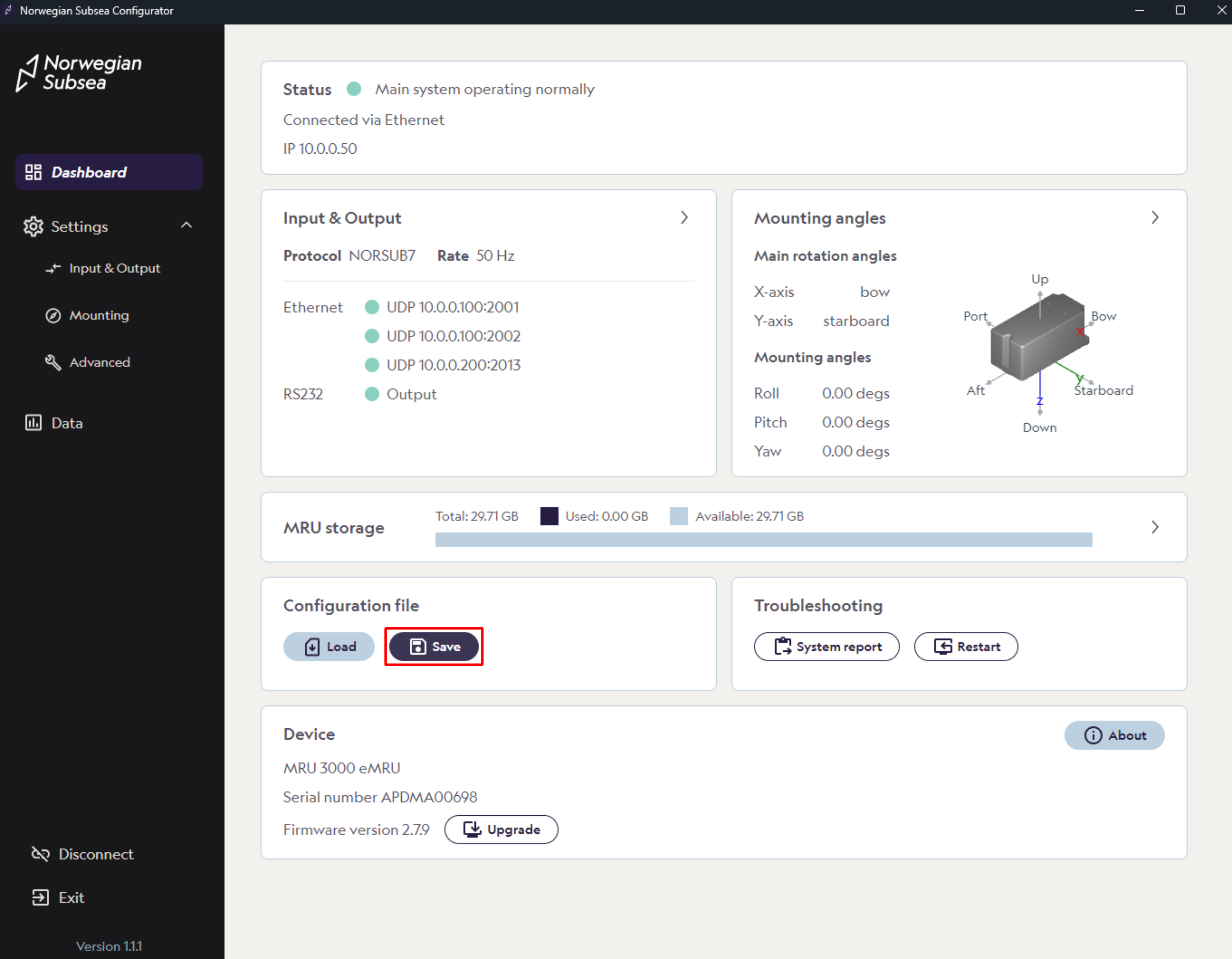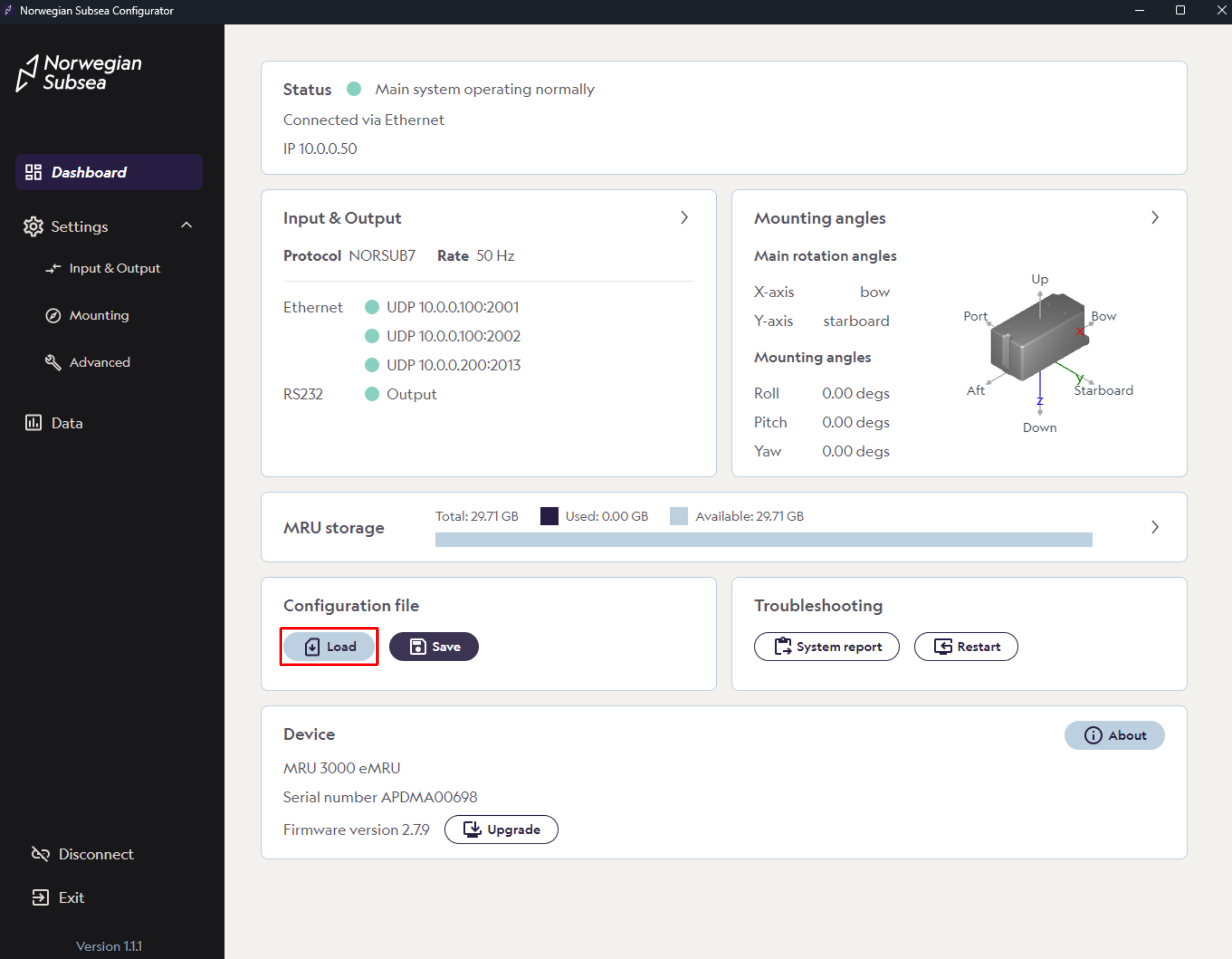Save and restore MRU configurations
This guide provides instructions on how to save and restore configuration files for your MRU. It also includes and overview of the content and structure of the MRU settings listed in the configuration file. The save and restore settings are as follows:
Save MRU settings to file: Saves a *.MRUconfig file to your local computer. This file can later be uploaded to the MRU to restore the saved configuration.
Load MRU settings from file: Selects a *.MRUconfig file to restore a previously saved configuration.
How to save MRU configuration
To save MRU settings to file, follow these steps:
Open the MRU configurator and connect to your MRU
Click “Save“ in the configuration file section
Then, choose a name of your configuration file and save it where you want it

How to load MRU configuration
To restore MRU settings from file, follow these steps:
Click “Load“ in the configuration file section
Locate your MRU configuration file in your file browser and open it

Configuration file structure
The configuration file contains 12 main categories:
udpStreamers – Lists the host IP address and associated UDP ports (supports up to three connections).
network – Configures network settings and communication protocols.
input – Defines settings for arbitrary aiding inputs.
output – Controls how output data is formatted and transmitted from the MRU.
installation – Specifies how the MRU is physically installed relative to the vessel and other reference points (e.g., CG, MP1, MP2).
time – Manages time synchronization of the MRU (NTP and PPS).
rs232 – Configures RS-232 serial communication.
rs485 – Configures RS-485 serial communication.
parameters – Contains miscellaneous settings, such as axis inversion.
geo – Defines geographic parameters such as latitude and magnetic declination.
filter – Tunes signal processing parameters, including cut-off frequencies and filter order.
analog – Configures the analog output interface, including mode selection (voltage or current), test output values, scaling (gain), and offsets.
There are a few differences between the default (factory) values for the MRU Compact and the MRU Marine/Subsea. Click the link below to view the detailed tables showing the exact configuration parameters and their factory settings for each model:
Modify the configuration file without GUI
You can modify the configuration file through the API. Alternatively, you can also modify the configuration file directly in a text editor, then upload and apply it using the configuration software.
